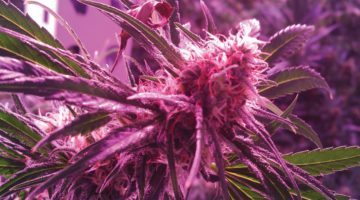
Photo via of Wikimedia
Prescription pain killers lay on a table. People around the country have become addicted to prescription-grade heroin and other narcotics because of over-prescribing. One suggested solution to fighting and preventing addiction is medical marijuana.
America is in the midst of a crisis, one that not a lot of people seem to be aware of or talking about. More than 2 million Americans are addicted to prescription opioids and that number continues to rise. While government organizations like the Center for Disease Control and Prevention are aware of this epidemic, little is being done to prevent it.
A student at the University of Nevada, Reno, who wished to remain anonymous and be known as Laura, became addicted to opioids when she was only 14 years old when she suffered a major back injury in a car accident while driving with her family.
The doctors at the hospital prescribed her hydrocodone to relieve her pain, and while this medication managed it well, she soon found herself craving pills even while not in pain. Her parents saw that she was relying on these pills to perform everyday functions and hid the pills in their room. Laura would sneak into her parents’ room while they were at work and steal two or three pills; one for her to take immediately and the rest for later.
Eventually, her parents caught her and made her realize that she had become an addict. That’s when Laura turned to medical marijuana.
Some healthcare professionals believe that marijuana could be the cure to opioid addiction and the end of the national crisis. However, there is not a lot of data to support this theory, and doctors across the United States are at odds about medical marijuana use.
What are opioids?
“Opioid” is another name for pharmaceutical-grade heroin that is legally produced and distributed. Opioids are generally prescribed as painkillers after major surgeries, injuries or while treating cancer.
Heroin is a Schedule I drug, according to the U.S. Drug Enforcement Agency. This means that it doesn’t have medical benefits and is highly addictive. However, substances such as hydrocodone and oxycodone are considered Schedule II drugs, even though they are legal heroin. Schedule II drugs have the same classification as Schedule I drugs, but can be used medicinally. According to the CDC, hydrocodone and oxycodone are the most common prescription opioids people overdose on.
Prescription opioid sales and overdoses have nearly quadrupled since 1999. They are the No. 1 cause of accidental death in the country.
In just 2012, 259 million prescriptions were written in the United States. For every four people who are prescribed opioids, one becomes addicted.
Can marijuana really help?
Nevada is one of 28 states in the country in which medical marijuana is legal. According to a study published in the journal “Health Affairs,” states that have legalized medical marijuana have written on average 1,826 fewer prescriptions in just three years.
Dr. Sue Sisley has dedicated her life to researching marijuana and its medical effects. Currently, she holds the only recognized Food & Drug Administration study that uses marijuana to treat post-traumatic stress disorder on soldiers returning from war.
“Overall, medical cannabis is offering a natural alternative to pharmaceutical prescriptions,” Sisley said. “I’ve seen patients utilize cannabis and have less side effects than when they were using prescription drugs. It is also less toxic. Patients are substituting [prescription drugs with] cannabis successfully and are highly more functional on cannabis alone.”
Opioid addicts face a long road to recovery once they start to get clean. They face nausea, abdominal pain, agitation, depression and cravings so intense they usually relapse, according to American Addiction Centers.
Dr. Dustin Sulak is another doctor who believes that medical marijuana can be used in combination with prescription opioids or even alone to treat pain. On his website, he states, “Cannabis does something to help patients stay in recovery, to stay out of that addictive chapter of their life and to move on to something new. There’s evidence elsewhere in the scientific literature that suggests cannabinoids can promote neuroplastic changes in the brain, changes literally in the structure of the brain related to new behavior, new thought patterns. That’s exactly what we need to get someone out of that addictive cycle into a new phase of life.”
Doctors against marijuana
Other doctors believe the way to treat addiction is by prescribing more narcotics. The National Institute on Drug Abuse says they use prescription medicine in order to close the receptors that are sending craving signals, help withdrawal symptoms and fight addiction.
The federal government does not recognize most studies where marijuana is used as a treatment. In the ones they do recognize, doctors have to use the supply that the government grows in Mississippi. Sisley said that she is reluctant to use their crop because they grow only a few strains, and the product is below standard.
The lack of studies makes some doctors hesitant, or even against, prescribing medical marijuana. They do not know the long-term effects of marijuana use, whether it is addictive, what strains work for what ailment, or what the proper dosage is per patient. What they do know is that no one has ever died from overdosing on marijuana.
The 2016 Surgeon General Report on Alcohol, Drugs and Health states, “Because these products and methods are unregulated even in states that have legalized marijuana use, users may not have accurate information about dosage or potency, which can lead and has led to serious consequences such as hospitalizations for psychosis and other overdose-related symptoms.”
Medical marijuana was the cure to Laura’s addiction. It eased her back pain without the addiction and harsh side effects of pain killers.
“I didn’t want to use pills anymore,” Laura said. “[Marijuana] was more effective. I don’t need weed every day like I needed hydrocodone.”
Madeline Purdue can be reached at mpurdue@sagebrush.unr.edu and on Twitter @madelinepurdue.












